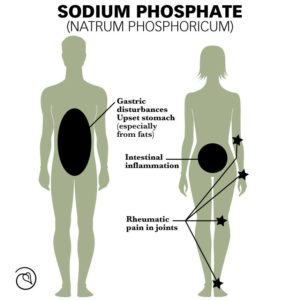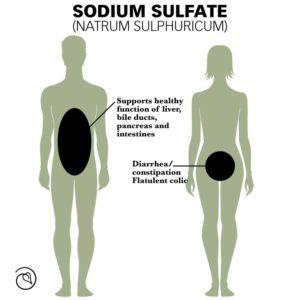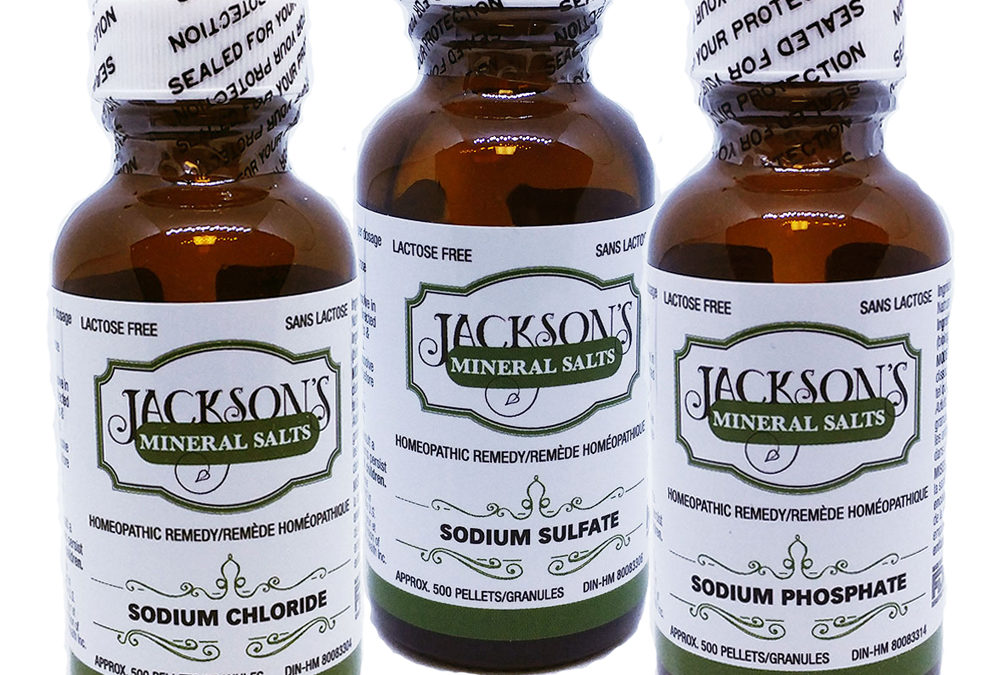Together the Natrums (aka the Sodiums) cell salts work together to maintain the water balance in the body: within the cells and around the cells. They also work together to support the digestive tract.

Let’s learn a little about each one’s role within the digestive system:
Natrum muriaticum (Sodium chloride) controls level of water or hydration within cells.
Is it to be thought of for problems with a lot of dryness or too much saturation (bloating). Affinity for mucus lining of the digestive tract.

Symptoms which may suggest Natrum muriaticum : Pressure and distention of stomach with craving for salty foods. Constipation from dryness of mucus linings, torn, smarting feeling after stool, anal fissures. DRYNESS. Constipation with watery discharges in other parts (eyes, salivation, etc.)
Natrum phosphoricum (Sodium phosphate) is known as the cell salt antacid (without the potential side effect)
Among other very important functions, Natrum phosphoricum is important in emulsifying fatty acids. This makes it an important remedy for all indigestion, heartburn, and stomach complaints, especially when it is aggravated by fatty or greasy foods.

Read this article to learn more about Natrum phosphorium and other roles in the body – Read here
Natrum sulphuricum (Sodium sulfate) controls how much water the body flushes from the system.
It aids and regulates the excretion of extra water of extra water in the body, from edemas, breaking down of lactic acids etc. Natrum sulph and Natrum mur can be thought to have opposite roles in the body. Natrum mur brings water into the body to be used in the cells and Natrum sulph attracts water to secure its elimination. It is also important for stimulating the epithelial cells of the bile ducts, pancreas, and intestinal canal, helps their normal functioning.

Symptoms which may suggest Natrum sulphuricum : flatulent colic (painful gas) with constipation, loose stools (especially if the urges drives one out of the bed in the morning).

